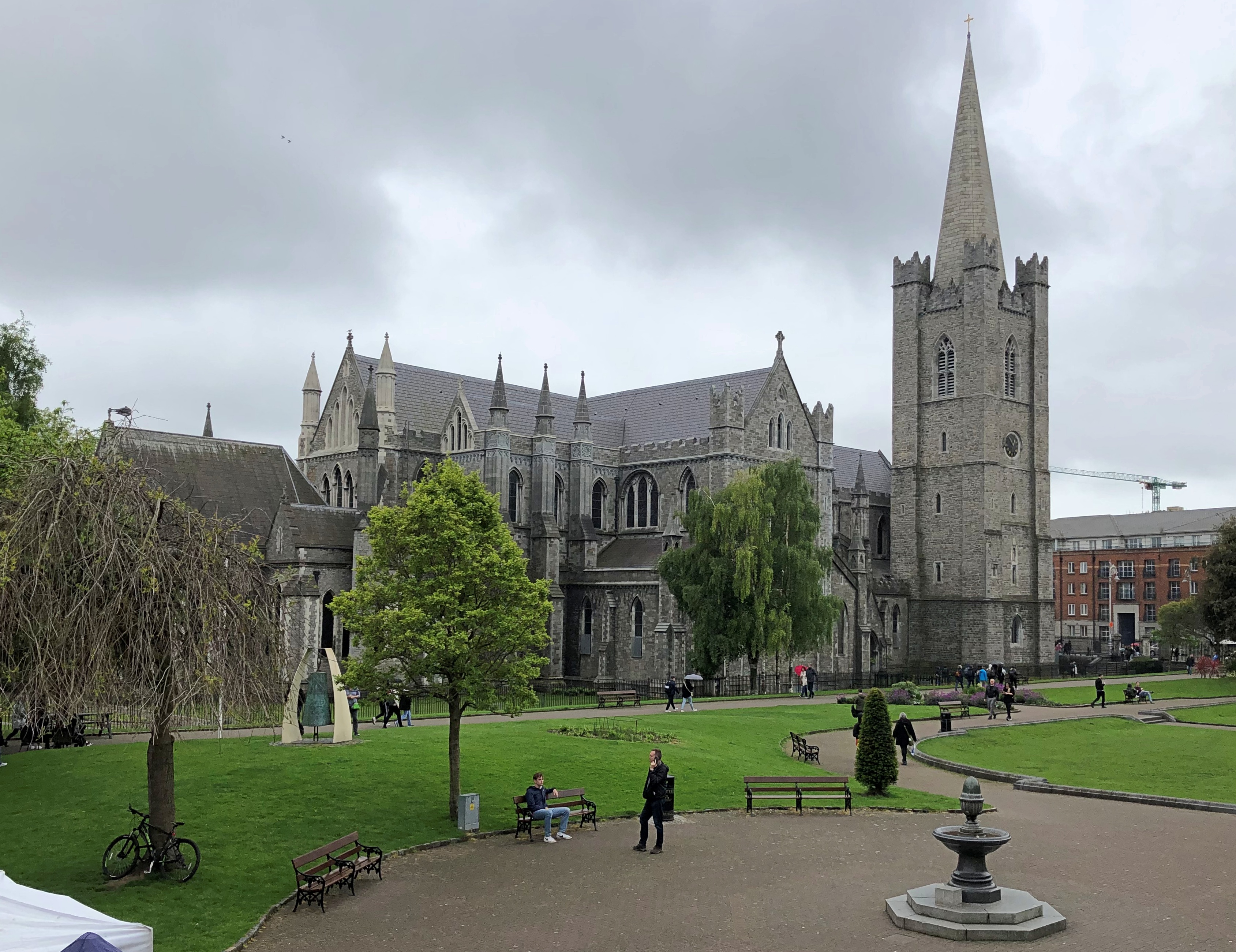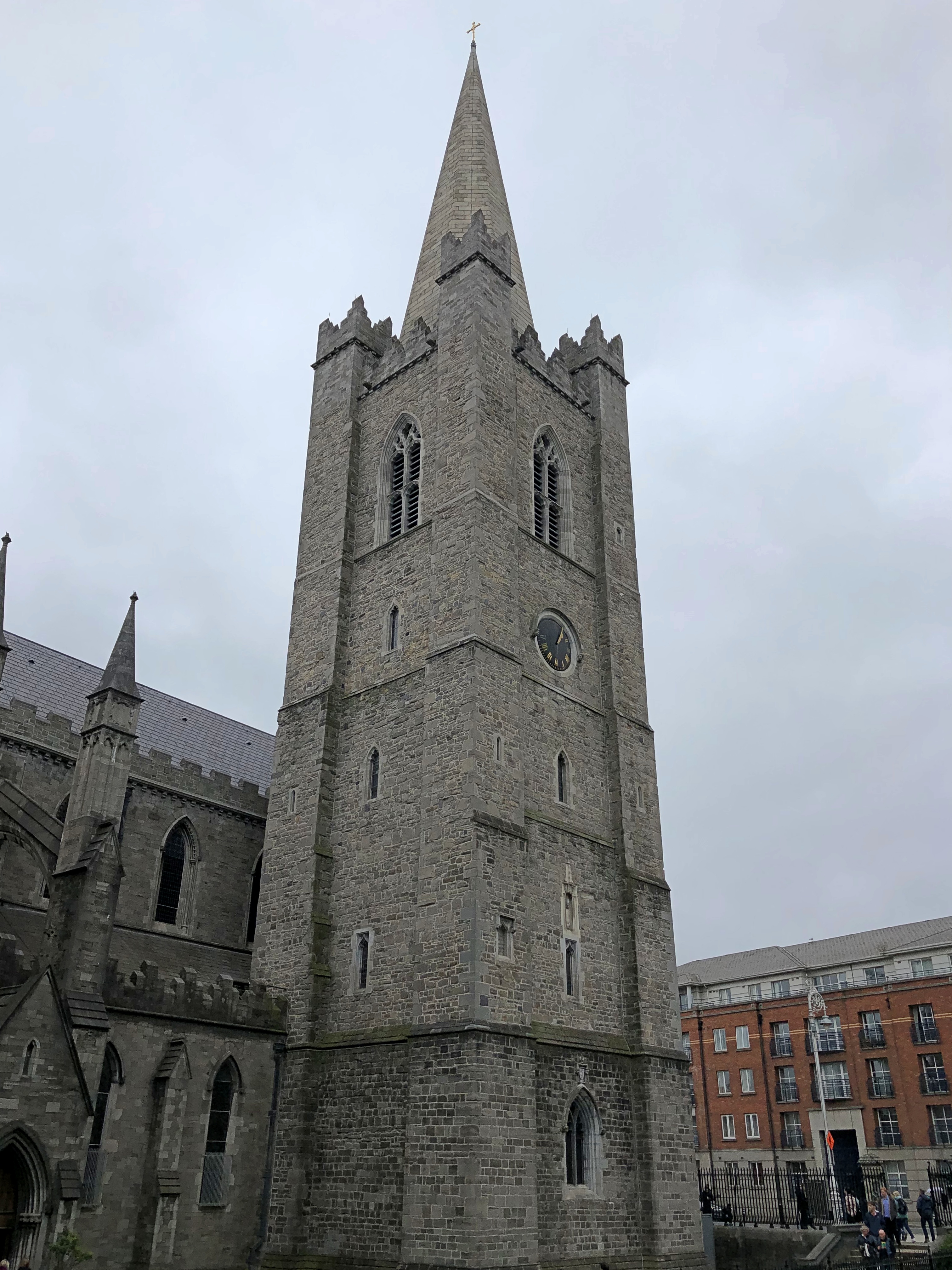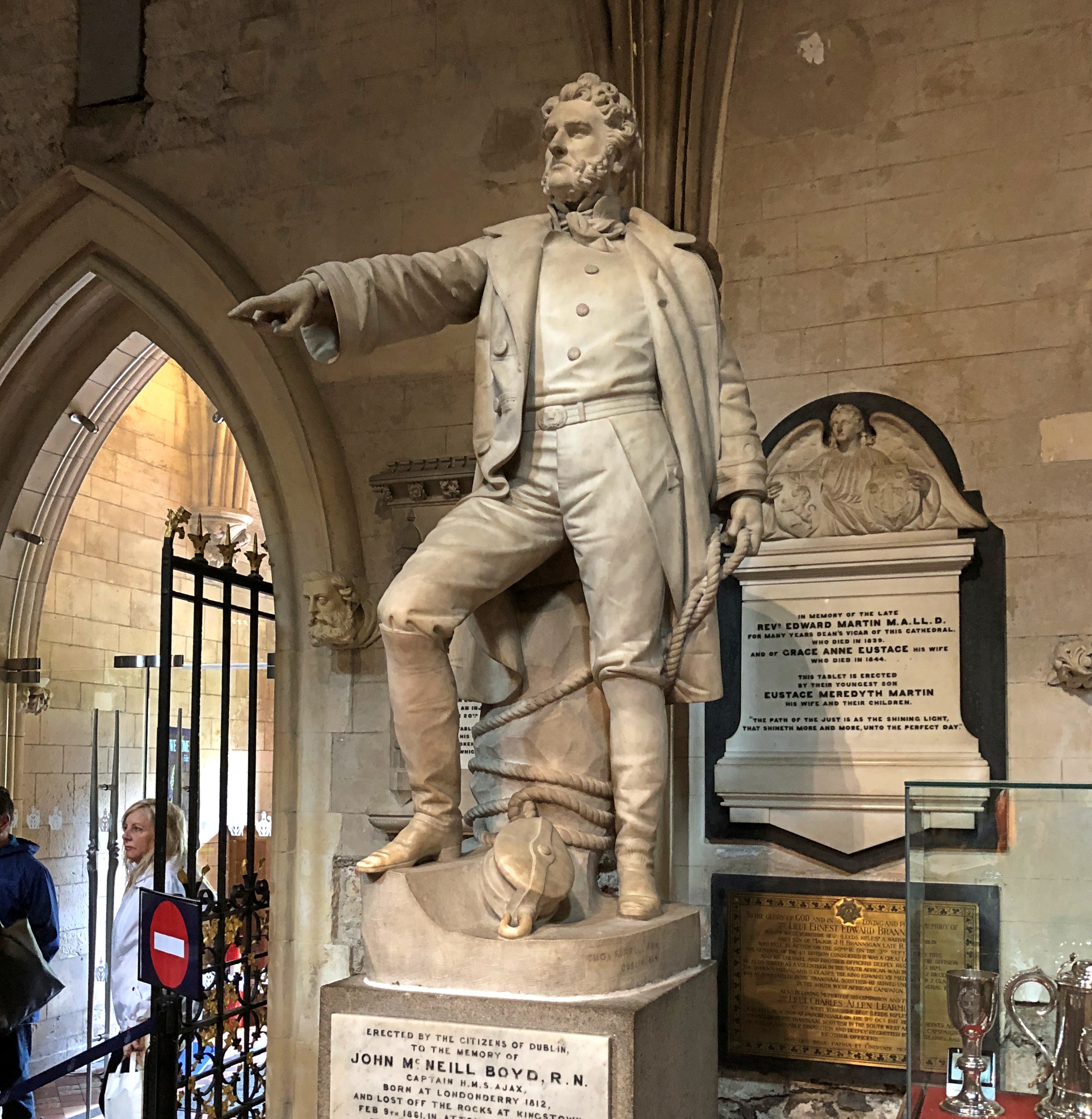In America, we have Gothic Revival churches, no more than 150 years old if that. In Europe, there are actual Gothic churches, and stepping inside takes you into sacred space many centuries older. You count as distant, unimaginable posterity for the builders or rebuilders of a place like St. Patrick’s Cathedral in Dublin.
The cathedral was the first place we went in that city. Actually, no. We ate at a spot called Wowburger first, partly because it was one of the few places open late morning on a Sunday. Though clearly inspired by American hamburgers and only around since 2015, I’d argue that Dublin-originated Wowburger is just as Irish as the cathedral. Go back far enough, after all, and cathedrals aren’t native to Ireland, either. Neither were the Anglo-Normans who built St. Patrick’s in the 13th century.
Wowburgers were really good. No wonder the chain is expanding beyond Ireland.
I used Google Maps, but we could also hear the ringing of its bells to guide us to the cathedral.

Adjoining the cathedral is a St. Patrick’s Park, created at the dawn of the 20th century. Nice place for a short stroll ahead of entering the cathedral.

Services had just ended, so St. Patrick’s opened to tourists. A good many besides us were there.

Much of the current interior appearance of the cathedral has a Victorian look, following a major 19th-century restoration and renovation funded – and directed – by Benjamin Guinness, a grandson of Arthur Guinness, and non-architect. Beer money to revive sacred space. Standards of documentation were a bit lax in the 1860s, so it isn’t entirely clear now what is renovation and what is older. So in a real sense, St. Patrick’s is both Gothic and Gothic Revival.
Because I am ignorant about much, I assumed going in that St. Patrick’s, a major religious edifice in the heart of Ireland, was Roman Catholic. But no: it is part of the Church of Ireland, a member of the Anglican Communion. That fact made me a little more amenable to paying the admission of €8 (the 60+ senior rate), not because of its Anglicanism specifically, but because there are so few members of that denomination to support such a grand church. The Guinness family can’t presumably be counted on to maintain the place in our time.
That discovery made me wonder: just how Catholic is Ireland these days? Not as much as I’d have thought, just like Mexico. According to the latest census (2016) by the Republic of Ireland, 78.3% of the population nationwide claims membership, down from about 95% the year I was born. The Church of Ireland counts 2.8% of the population as members these days. Those Irish claiming no religion came in at just short of 10%, way up from next to none during my lifetime.
Food for thought among these ancient stones and glass.



Another fascination for me of churches of this age are the burials and memorials, mostly of people mostly forgotten. St. Patrick’s has many. I looked for Jonathan Swift, among other things dean of the cathedral for many years, and who is not forgotten, but I didn’t take a good picture of his stone on the floor.
One Capt. John Boyd, on the other hand, commander of the HMS Ajax and lost in a storm off Dublin in 1861, has a life-sized statue right at the entrance. No one else was paying him any mind.

Poignant reminders of those lost in the Great War.
Is there anything to remind us of St. Patrick himself in his namesake cathedral? At least one thing I saw, which is found in the gift shop in the back of the cathedral.
St. Patrick socks. Wear them to keep snakes away? Could be.